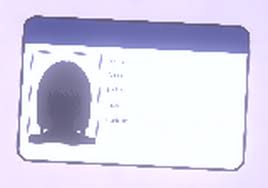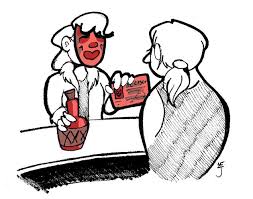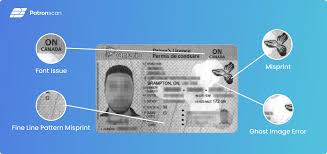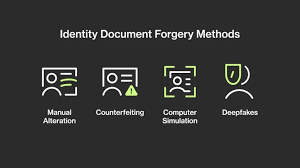Smart Fake ID Buyer's Checklist: 15 Key Features Your Fake ID Must Have
Smart Fake ID Buyer's Checklist: 15 Key Features Your Fake ID Must Have
Thinking about getting a fake ID? You're not alone — a lot of people are looking into it.
But listen up: Not all fake IDs are created equal, and choosing the wrong one can get you in big trouble.
It's important to know what makes a good fake ID and how to find a trustworthy place to get one.
In this post, I'll show you what to check so you can make an informed choice.
Let's get started!
Things to Look For When Buying a Fake ID
Before you buy a fake ID, you need to look for these things.
Spot Quality Like a Pro
When you buy a fake ID, the first thing to check is quality.
A good fake should look and feel nearly identical to a real ID. Some fakes are made of cheap materials, so they feel flimsy or look wrong, while others use high-quality plastic and have crisp, clear text.
You want an ID that feels solid, not like a piece of paper or thin plastic. Colors should be vibrant but not too bright, and text should be clear, not fuzzy.
Another thing to look for is spelling and grammar.
Real IDs don't have spelling mistakes or weird errors, so if you notice any, that's a good sign that the ID is fake.
Even small details like this can make a big difference in whether your ID is accepted or rejected. Checking the quality beforehand can save you from getting stuck with a useless fake that can get you in trouble later.
At the end of the day, quality is important. The better the fake, the less likely you are to get caught.
Buying a Real or Fake ID
Is the Photo Believable?
The photo on a fake ID is one of the easiest things to screw up. It has to look just like the person using the ID, or it's an immediate red flag.
The picture should be clear and look like it was copied and pasted from another picture. If the photo looks blurry, stretched, or poorly cropped, that's a big clue that the ID is fake.
Fake ID Photos
Another thing to keep in mind is whether the person in the photo matches the age on the ID. For example, if the ID says you're 25, but the photo looks like you're still in high school, that won't work. You want the photo to look as close to your actual age as possible.
Using a high-quality, realistic photo can make a huge difference in whether your ID is accepted. Blurry or mismatched photos are a quick way to get caught.
Before using a fake ID, always double-check the picture.
Name and Address: Do They Add Up?
The name and address on a fake ID should be believable and consistent with everything else on the card. You can’t just throw any name and address out there and hope for the best.
For example, if the ID says you’re from California, the address should actually be in California, not some completely different state. It needs to make sense.
If the name or address sounds fake, that’s a huge red flag. You want the ID to look like it belongs to a real person, so picking a normal-sounding name is key.
Also, double-check that the name and address match the information on the rest of the ID. Any inconsistencies will make the ID look suspicious.
Taking the time to make sure the name and address add up will save you from unnecessary scrutiny. It’s a small detail, but it can make or break the credibility of your fake ID.
Don’t Ignore the Date
The date is another important detail to check for a fake ID. First, make sure the expiration date is still valid.
If the ID is expired, that's an immediate sign that it's not authentic. You also need to look at the issue date. If the ID says it was issued last year but the person is supposedly in their 20s, that looks odd.
The date needs to be consistent with the age of the person using the ID. A lot of people forget to check this, but it's a critical step.
If you overlook the date, you're taking a big risk. The authorities and bodyguards are trained to spot mistakes like this, so paying attention to these details can save you from getting caught.
In short, don't overlook the dates. They need to be authentic and consistent with the rest of the information on the ID.
Are the security features legitimate?
One thing that separates a real ID from a fake one is the security features. Real IDs have things like holograms, watermarks, and microprinting that are hard to replicate.

These are small but important details that can make a fake ID look legitimate. A good fake will have these security features, or at least something close to them.
For example, a hologram should look 3D and change when you tilt the card. A watermark should be faint but visible in the right light. The microprint should be small but readable with a magnifying glass. If these features are missing or appear to be poorly done, the ID is probably fake.
Always check these features before buying or using a fake ID. They are not easy to replicate, but they are essential to making the ID look authentic.
The better the security features, the less likely you are to be caught.
Ask for identity verification – it’s a must
A good fake ID supplier should offer some form of ID verification. This means they will check to make sure the ID scans correctly or matches a real ID template.
Some suppliers may even allow you to send in a real ID to make sure everything matches.
If a supplier refuses to offer verification, that’s a big red flag. It could mean they’re not confident in their product, or worse, they’re trying to scam you.
Good suppliers test their IDs to make sure they look and work like the real thing.
Asking for ID verification gives you peace of mind that your fake ID won’t be a complete waste of money. It’s worth taking this extra step to make sure everything works. After all, you want the ID to not be rejected the first time you try it.
Beware of scammers
Sadly, there are a lot of scammers out there who will take your money and leave you with nothing – or worse, send you a fake that doesn’t work.
To avoid getting ripped off, you’ll need to do some research. Look for reviews and see what other people are saying about the supplier. If there are too many negative reviews or people saying they never got their IDs, it’s best to steer clear.
Additionally, be wary of vendors offering deals that seem too good to be true. Extremely low prices or promises of super-fast delivery are often signs of a scam.
Scammers use these tactics to get people to buy quickly without a second thought.
Taking the time to research vendors can save you from losing money and being stuck with a useless ID. It’s better to be safe than sorry.
Be careful with online auctions
Online auctions can be risky places to buy fake IDs. Many scammers sell low-quality fakes on these platforms, and it’s hard to track them down after the fact.
If you decide to buy from an auction, always check the seller’s feedback. Look for reviews from other buyers to see if they had a good experience.
Be wary of sellers with a lot of negative reviews or no reviews at all. If anything doesn’t look right, it’s best to walk away. There are many other places to get fake IDs that are more trustworthy than auction sites.
Buying from a verified vendor is usually a safer option. It’s worth spending a little extra for the peace of mind that comes with knowing you’re not getting scammed.
Is it time for a new ID?
If your fake ID is no longer valid or has been flagged, it’s time to get a new one. Trying to use the same bad ID over and over again will only increase your chances of getting caught.
Whether the ID is obviously flawed or simply won't pass inspection, don't take the risk.
Investing in a new, high-quality fake ID is a smart move. The better the ID, the less likely you are to run into problems. If your current ID doesn't fit, don't hesitate to replace it. Using the wrong fake ID isn't worth the risk.
In short, don't hold onto the wrong ID. A new one can save you a lot of trouble.
Check the lamination and material
One of the easiest ways to tell if an ID is a fake document is to check the lamination and overall material.
Real IDs are laminated with high-quality plastic that feels smooth and durable. If the lamination on your fake ID feels cheap, like it's peeling off the edges, or the card bends too easily, that's a red flag.
In addition, the material of the card is important. Real IDs are made of tough plastic or polycarbonate, not something flimsy like paper or thin plastic.
If the ID feels too light or too flexible, it's most likely a poorly made fake. You can even compare it to a real ID you have on hand to see if the weight and feel match up.
Paying attention to the lamination and material can help avoid an ID that might fall apart or be easily identified as a fake ID. These are small but crucial details that can make a big difference in whether your ID passes the test.
Test the Barcode and Magnetic Stripe
Many modern IDs have a barcode and magnetic stripe on the back that stores information. If the fake ID you are considering does not have these features, that is an immediate red flag.
Even if a barcode or magnetic stripe is present, it needs to work. Some low-quality fake IDs have fake or non-working barcodes that do not scan properly when checked by a bouncer or store clerk.
A good fake will have a working barcode that scans and matches the information on the front of the card. This feature can be tested by asking the vendor or using a barcode scanner app.
If the barcode does not work or the magnetic stripe looks strange or out of place, it is best to look for another ID.
This simple check can prevent the embarrassing situation where an ID does not scan, making it obvious that it is a fake.
Check the font and typography
Real IDs have consistent, professional fonts and typography. The text should be evenly spaced, aligned, and easy to read.
If the font on the ID is uneven, too bold, too light, or doesn't match the style of a real ID, that's a major red flag.
Take a close look at the numbers, letters, and symbols on the ID. The text should be crisp and clear, not pixelated or blurry. Poor quality fakes often contain text that's slightly off in size or style.
This is something a bodyguard or law enforcement officer will quickly catch. Comparing the font to a real ID can help you spot the difference and avoid fake fonts that are too easy to detect.
Even minor inconsistencies in the text can make an ID look suspicious, so don't overlook this detail.
Check the weight of the ID
Believe it or not, the weight of an ID can be a dead giveaway. Real IDs, especially driver's licenses, have some heft to them because they're made of quality materials.
If a fake ID feels too light or too heavy, that's cause for concern.
The easiest way to check this is to compare a fake ID to a real one. Hold them both in your hand and see if the weight is similar. If a fake ID doesn't feel right, either too flimsy or unusually heavy, it may not pass muster when someone examines it.
This may seem like a small detail, but professionals who examine IDs, such as bodyguards or store clerks, handle these cards all day long. They will notice if something doesn't feel right, which could cause your fake to be rejected.
Observe laser-engraved details
Some government-issued IDs have laser-engraved details that are nearly impossible to replicate.
For example, some states use lasers to engrave small details like signatures, symbols, or even a second image of a photo. These engravings are difficult to fake because they are etched into the material rather than just printed on top.
If your fake ID is missing these laser-engraved details, or if they look fake or poorly made, that's a bad sign.
Laser engraving adds depth and texture to the card, something that many fake IDs can't replicate very well. Checking these details is especially important if your fake ID is from a state that uses them.
Missing or poorly engraved details are a sign that your ID is not authentic. So be sure to double-check this before you buy.
Verify the Signature
A real ID always has a signature, and this is another area where fake IDs may fall short. The signature on the ID should look natural, not like it was printed using a basic font.
If the signature looks too perfect or too fake, it’s a sign that the ID was not carefully crafted.
Additionally, the placement of the signature is important. It should be in the right place and not overlap with other text or images.
Some poorly made fake IDs have signatures that look out of place, which is something that bodyguards or authorities will notice.
The signature adds a personal touch to the ID, so make sure it looks authentic. A good fake ID will convincingly replicate these details, but a bad ID can be easily spotted if the signature doesn’t look right.
Bonus: Common sense is your best friend
Ultimately, common sense is the best defense when buying a fake ID. If something doesn’t feel right, trust your instincts.
Whether it’s a shady vendor or an ID that looks too good to be true, it’s best to proceed with caution.
Take your time, do your research, and don’t rush into anything. There are a lot of vendors out there, so if one doesn’t look trustworthy, move on.
Trusting your instincts and using common sense will save you from making costly mistakes.
If something looks too good to be true, it probably is. Use your judgment and you’ll save yourself a lot of trouble.
How to Find a Trustworthy Fake ID Supplier
When buying fake IDs, the last thing you want is to get scammed or receive a poor quality product.
To ensure you’re dealing with a reputable supplier, you should look for the following:
Good Reputation
The supplier’s reputation is key. Do some digging on forums and review sites to see what others are saying. Trustworthy providers have a long history of delivering on their promises.
For example, suppliers like ideverest.com are often mentioned in discussions about reliable fake ID services, thanks to their consistent quality and customer satisfaction.
Highest Quality IDs
A high-quality fake ID should have all the key features of a real ID, including holograms, watermarks, and sturdy materials. Suppliers with a good reputation, like ideverest, are known for producing IDs that look and feel like real IDs.




Before making a decision, always check reviews or buyer photos that show quality.
Responsive Customer Service
Customer service is often a good indicator of a supplier's reliability. Reputable sellers like ideverest.com are responsive and willing to help with any questions or concerns. They also stand behind their products and offer replacements or refunds if something goes wrong. If a supplier isn't easy to contact, that's a sign to stay away.





Fair Pricing
Price is important, but you don't want to choose based solely on lowest cost. Suppliers like ideverest offer fair, competitive prices for the quality they provide, and often offer discounts for bulk orders.




Be wary of deals that seem too good to be true - quality should always be your top priority.
Order Your Fake ID Card
Fast and Reliable Shipping
Fast shipping is another sign of a reliable supplier. Trustworthy brands like ideverest offer fast, trackable shipping options, so you don't have to wait endlessly for your ID to arrive. Suppliers that provide tracking information can give you peace of mind that your order is on its way.
Secure Payment Methods
Always make sure the supplier offers secure payment methods like Bitcoin, Bitcoin Cash, Zcash, or any other digital coin. Suppliers with a good reputation, such as ideverest.com, prioritize customer security by using encrypted payment options to protect your personal information.
Privacy and Discretion
Privacy is important, and good suppliers understand this. Suppliers like ideverest.com ensure discreet packaging, so your order doesn’t draw attention. They also don’t ask for unnecessary personal details, making the process smoother and safer.
Real Reviews, Not Fake Praise
Finally, look for genuine, authentic reviews. You’ll often see trusted suppliers like ideverest.com listed in forums where people share their experiences with different fake ID providers. Authentic feedback is a great way to gauge whether a supplier is trustworthy.
Conclusion: Be Smart, Be Safe
Buying a fake ID is a serious decision, and it’s important to approach it with caution.
Paying attention to key factors like the supplier’s reputation, product quality, and their commitment to customer service can help you avoid scams and ensure the ID you get doesn’t raise any red flags.
Suppliers like ideverest.com have built trust over time by consistently providing reliable, high-quality fake IDs—so if you’re going to make a move, make it smart.
Remember, patience and research go a long way. Take your time to check reviews, ask questions, and don’t rush into any deal that seems too good to be true.
Ultimately, your goal is to get a product that looks and works just like the real thing. Trust your instincts, make smart decisions, and you’ll be well on your way to getting the ID you need without incurring unnecessary risks.

Happy shopping, and stay safe!
 Best Fake ID for Florida
Best Fake ID for Florida
 fake ID features
fake ID features
 Fake ID for North Carolina
Fake ID for North Carolina
 New Jersey Fake IDs
New Jersey Fake IDs